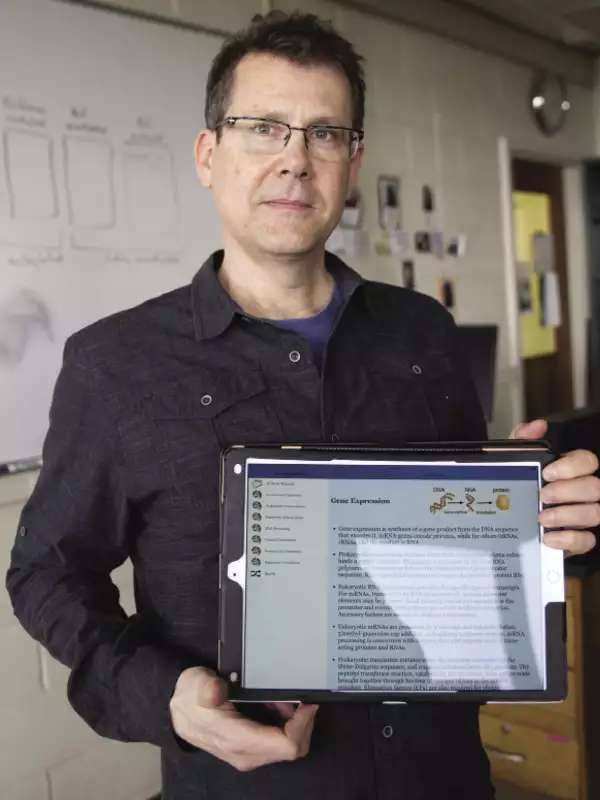
Brian Morton
Department
Biology
Office
Contact
Brian R. Morton, Professor of Biological Sciences, joined the Barnard faculty in 1995.
One area of Professor Morton's research focuses on two main aspects of genome evolution, with an emphasis on plant plastid genomes.
The first is the selective constraints on both codon usage and genome structure across a wide variety of phyla of the plant kingdom. He is attempting to determine how and why selection intensity varies among lineages as well as over time. He is also interested in finding out how selective constraints on codon usage interact with other structural features, such as amino acid composition of proteins and genome organization.
His second major line of research involves an investigation of the nucleotide substitution dynamics of plastid DNA. Professor Morton and his research team are studying the ways in which rate heterogeneity among sites is affected by variation in context, or the composition of nucleotides flanking those sites.
Another area of research examines the chemosensory receptor superfamily in the tobacco hornworm (Manduca sexta). We have identified several dozen putative olfactory and gustatory receptor genes in the newly sequenced genome and inferred function based on sequence similarity to other insect chemosensory proteins. We are now utilizing the CRISPR-Cas9 genome editing tool to generate knock-out mutants for these genes in order to better characterize their function.
- BS, University of Toronto
- PhD, University of California, Riverside
- Molecular evolution
- Evolutionary genomics
- BIOL BC2100 Molecular & Mendelian Genetics
- BIOL BC 2272 Evolution
- BIOL BC3308 Genomics and Bioinformatics
- SCPP BC3333 Science and Public Policy
- BIOL BC2801 Laboratory in Genetics
- BIOL BC3305-3306 Project Lab in Molecular Genetics
Suzuki H, Morton BR (2016) Codon Adaptation of Plastid Genes. PLoS ONE 11(5): e0154306. https://doi.org/10.1371/journal.pone.0154306
Kanost MR, Morton B, Shukla A, Hirsh A and 110 others (2016) Multifaceted biological insights from a draft genome sequence of the tobacco hornworm moth, Manduca sexta. Insect Biochem Mol Biol. 2016 Sep;76:118-47. doi: 10.1016/j.ibmb.2016.07.005.
Koenig C, Hirsh A, Bucks S, Klinner C, Vogel H, Shukla A, Mansfield JH, Morton B, Hansson BS, Grosse-Wilde E. 2015. A reference gene set for chemosensory receptor genes of Manduca sexta. Insect Biochemistry and Molecular Biology 66: 51-63.
Afroz A, Howlett N, Shukla A, Ahmad F, Batista E, Bedard K, Payne S, Morton B, Mansfield J. H., and J. I. Glendinning 2013. A TrpA1-dependent pathway integrates taste and temperature in Manduca sexta. Chemical Senses 38(7): 605-617.
Howlett N, Dauber K, Shukla A, Morton B, Glendinning JI, Brent E, Gleason C, Islam F, Izquierdo D, Sanghavi S, Afroz A, Aslam A, Barbaro M, Blutstein R, Borkova M, Desire B, Elikis A, Fan Q, Hoffman K, Huang A, Keefe D, Lopatin S, Miller S, Patel P, Rizzini D, Robinson A, Rokins K, Turlik A, and J. H. Mansfield 2012. Identification of chemosensory receptor genes in Manduca sexta and knockdown by RNA interference. BMC Genomics 13:211.
Morton B. R., Dar V. and S. I. Wright 2008. Analysis of site frequency spectra from Arabidopsis with context-dependent corrections for ancestral misinference. Plant Phys. 149:616-624.
Morton R. A. and B. R. Morton 2007. A maximum likelihood analysis of compositional skew in microbial genomes. BMC Genomics 8:369.
Zheng T., Ichiba T. and B. R. Morton 2007. Assessing substitution variation across sites in grass chloroplast DNA. J. Mol. Evol. 64:605-613.
Morton B. R. and S. I. Wright 2007. Selective constraints on codon usage of nuclear genes from Arabidopsis thaliana. Mol. Biol. Evol. 24:122-129.
Tillich M., Lewahrk P., Morton B. R. and U. G. Maier 2006. The evolution of chloroplast RNA editing. Mol. Biol. Evol. 23:1912-1921.
Morton B. R., Bi I. V., McMullen M. D. and B. S. Gaut 2006. Variation in mutation dynamics across the maize genome as a function of regional and flanking base composition. Genetics (172:569-577)
Morton B. R. 2003. The role of context-dependent mutations in generating compositional and codon usage bias in grass chloroplast DNA. J. Mol. Evol. 56:616-629.
In The News
After publishing Evidence from simulation studies for selective constraints on the codon usage of the Angiosperm psbA gene under the mentorship of Professor Brian R. Morton in the upper-level lab course, Project Lab, Theyjasvi Ashok, Nina Kalkus, and Joy Barrett sat down with us to discuss their work and what research at Barnard has been like for them.
On the heels of winning the Charles H. Turner Award from the Animal Behavior Society, Chelsea Sinclair ’21 shares how neuroscience combines her love for the humanities and the sciences.